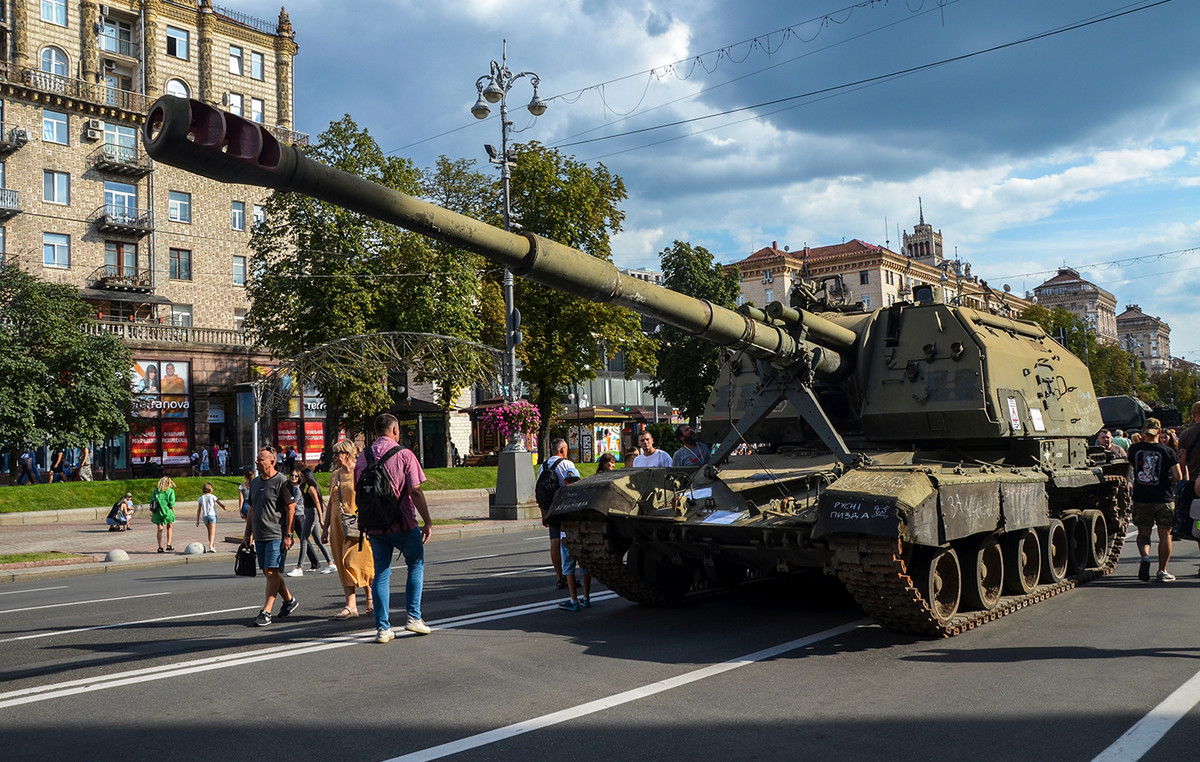China has accused the United States of “stoking military confrontation” with the recent deployment of a powerful missile launcher capable of firing weapons with a range of up to 1,600 kilometers for exercises in the Philippines.
The US Army's medium-range land-based missile system (MRC) arrives in a tense region following a series of dangerous clashes between Chinese and Filipinos in the South China Sea, during which Philippine ships were attacked with water cannons, injuring several sailors.
It is the first deployment of the MRC missile system, also known as the Typhon system, to the Indo-Pacific region, and comes amid a series of US-Philippines military exercises, including the largest ever edition of the bilateral drills. from Balikatan from Monday (22).
The U.S. Army has not said how long the Typhon system will remain in the Philippines, but its involvement in the series of joint exercises between the two treaty allies, the first of which began April 8, sends a signal that the U.S. can field weapons offensives within striking distance of Chinese installations in the South China Sea, southern mainland China and along the Taiwan Strait, analysts say.
The Typhon system is capable of firing the Standard Missile 6 (SM-6), a ballistic missile defense munition that can also target ships at sea to a range of 370 kilometers, according to the Center for Defense Missile Defense Project. Strategic and International Studies (CSIS).
It can also fire the Tomahawk Land Attack Missile, a maneuverable cruise missile with a range of 1,000 miles, according to CSIS.
According to Beijing, its presence in the region increases the risks of “error of judgment and miscalculation.”
During a regular press briefing last week, Chinese Foreign Ministry spokesman Lin Jian accused the US of seeking a “unilateral military advantage” and highlighted Beijing's strong opposition to the deployment.
“We urge the US to seriously respect the security concerns of other countries, stop fueling military confrontations, stop undermining peace and stability in the region, and take concrete actions to reduce strategic risks,” Lin said.
The U.S. Army is calling the deployment, which began April 11 for the Salaknib exercise, a “milestone” in its regional capability.
Diplomatic consequences
The apparent diplomatic fallout comes as participants from 29 countries, including the commander of the U.S. Pacific Fleet, take part in a two-day Western Pacific Naval Symposium that began in the eastern Chinese port city of Qingdao on Sunday.
Participants will discuss “maritime peace, maritime order based on cooperation in maritime security and international law, and global maritime governance,” according to Chinese state news agency Xinhua.
These are the same rules that Washington and Manila accuse Beijing of ignoring with aggressive Chinese actions that have injured Philippine sailors and damaged vessels around disputed resources in the South China Sea.
The 1951 mutual defense treaty between the US and the Philippines – the oldest US pact in the Asia-Pacific – stipulates that both sides would help defend each other if either was attacked by a third party.
In brief comments on CNN On the sidelines of the meeting, Adm. Stephen Koehler said, “I think it’s a great opportunity for all the navies to come together and discuss all the issues.”
China's missile advantage
Analysts say the deployment of the Typhon missile battery is the first sign of U.S. plans to address what has long been Beijing's advantage in the region.
“This somewhat 'equals' the previous situation, in which (Chinese) missiles threatened US forces along the First Island Chain (which includes the northern Philippines, Japan and Taiwan), and even further east to along the Second Island Chain centered on Guam,” said Collin Koh, a researcher at the S. Rajaratnam School of International Studies in Singapore.
A 2021 report for the United States Army's professional magazine, Military Review, scathingly presents the current missile advantage of China's People's Liberation Army Rocket Force (PLARF).
“The PLARF's conventional wing is the largest land-based missile force in the world, with more than 2,200 conventionally armed ballistic and cruise missiles and enough anti-ship missiles to attack every U.S. surface combat ship in the South China Sea with enough power. of enough fire to overcome each ship's missile defense,” wrote Army Major Christopher Milhal.
While the Typhon can't bring those kinds of numbers to U.S. forces, its mobility poses a problem for Chinese mission planners — giving it important deterrent value, analysts say.
In announcing the deployment of Typhon, the U.S. military noted how the system was delivered to the Philippines via a 15-hour, more than 8,000-mile flight from Washington state by a U.S. Air Force C-17 cargo plane.
Analysts do not expect the Typhon system to be permanently based in the Philippines, but Koh said the ability to move batteries to a variety of “pre-loaded launch sites” around the region on short notice increases its survivability and relatively challenging challenges. new and untested Chinese intelligence, surveillance, reconnaissance (ISR) and targeting capabilities.
Whether Typhon's likely temporary status mitigates the consequences remains to be seen, but China has already reacted furiously to missile deployments in what it considers “its backyard.”
Writing on the International Institute for Strategic Studies' Military Balance Blog, analyst Rupert Schulenberg noted that in 2016, when South Korea agreed to the deployment of a THAAD defensive missile system on the Korean peninsula, “Beijing responded with an economic boycott unofficial account that cost South Korea’s economy $7.5 billion in 2017 alone.”
The current deployment of the Typhon was something that would not have been an option for the US military until 2019. The development of ground-launched missile systems was prohibited by the 1987 Intermediate-Range Nuclear Forces Treaty between the US and the Soviet Union.
But the U.S. formally withdrew from the treaty in 2019, with then-President Donald Trump citing “Russian noncompliance and concerns about China’s arsenal of intermediate-range missiles.”
Balikatan exercises begin
Meanwhile, the US and Philippines began the largest of their series of joint exercises on Monday (22), with the three-week exercises in Balikatan – Tagalog for shoulder to shoulder – involving thousands of military personnel.
A report from the official Philippine News Agency said Manila would use the annual exercises to showcase its military's most advanced systems, including a missile frigate, light fighters, combat support aircraft and Black Hawk helicopters.
Philippine authorities previously indicated that the naval portion of the exercise would extend for the first time beyond the 12 nautical mile limit of Philippine waters – and into the country's exclusive economic zone, some 200 nautical miles – about 370 kilometers – from the shores. Philippines, although no exact route was given.
It will also include French naval participation in a sailing group from Palawan Island, according to Philippine officials.
Palawan, which lies between the South China Sea and the Sulu Sea, is about 200 kilometers from the Second Thomas Shoal, a contested feature in the Spratly Islands that has been the site of numerous clashes between Philippine coast guard ships and Chinese.
Source: CNN Brasil
Bruce Belcher is a seasoned author with over 5 years of experience in world news. He writes for online news websites and provides in-depth analysis on the world stock market. Bruce is known for his insightful perspectives and commitment to keeping the public informed.







